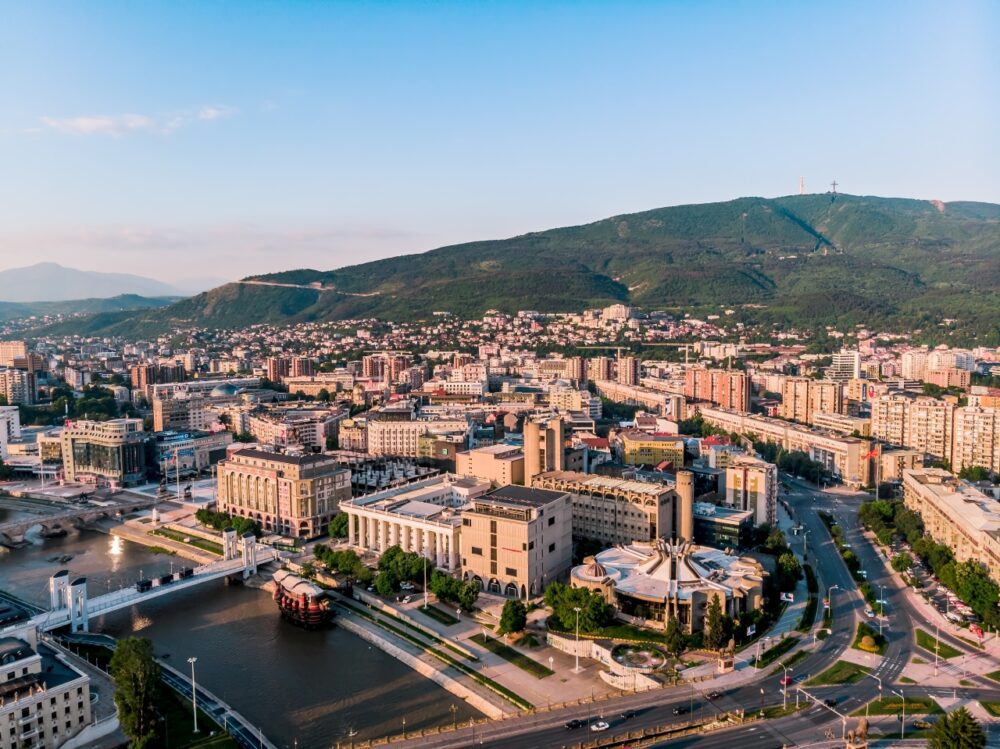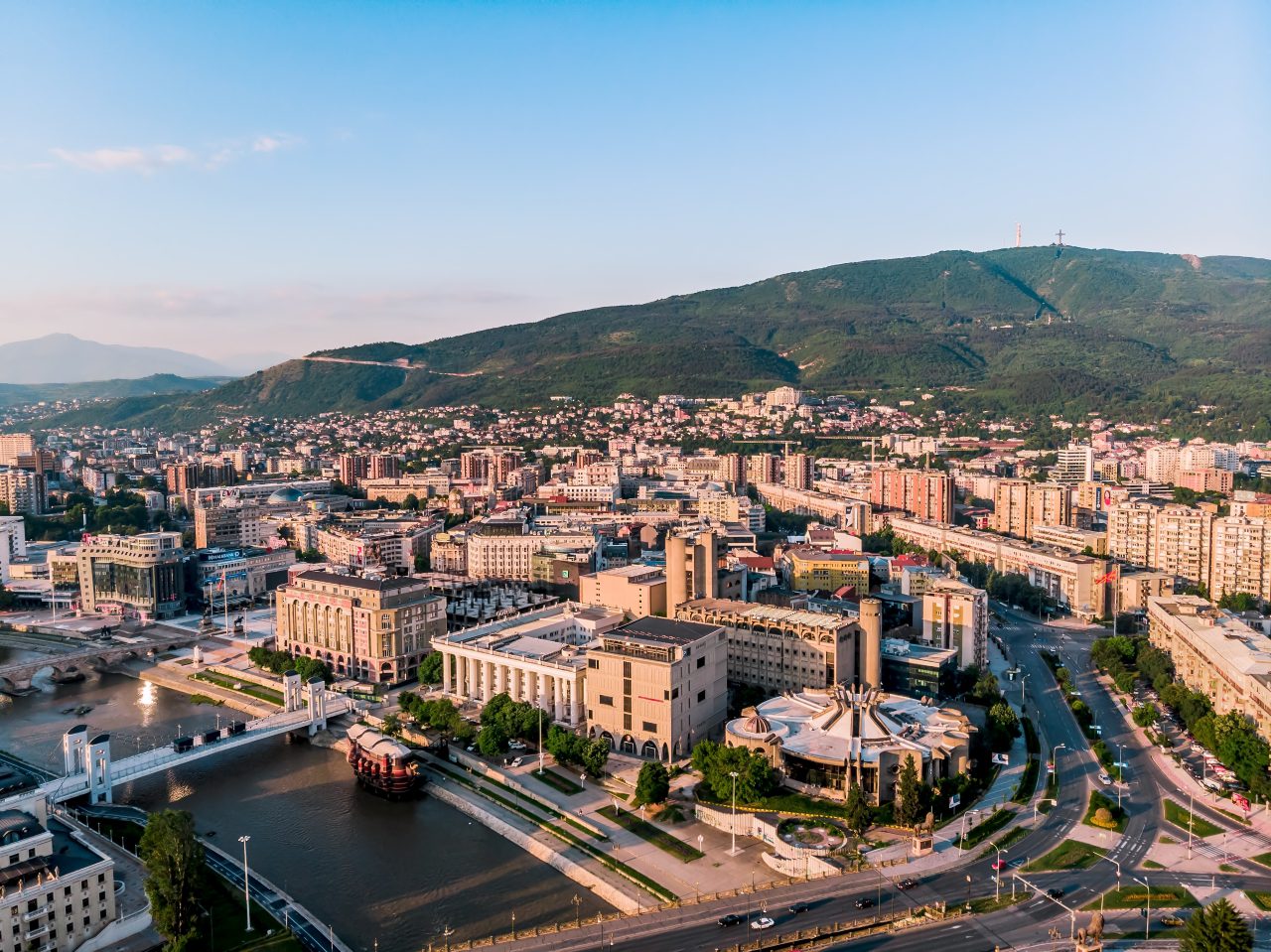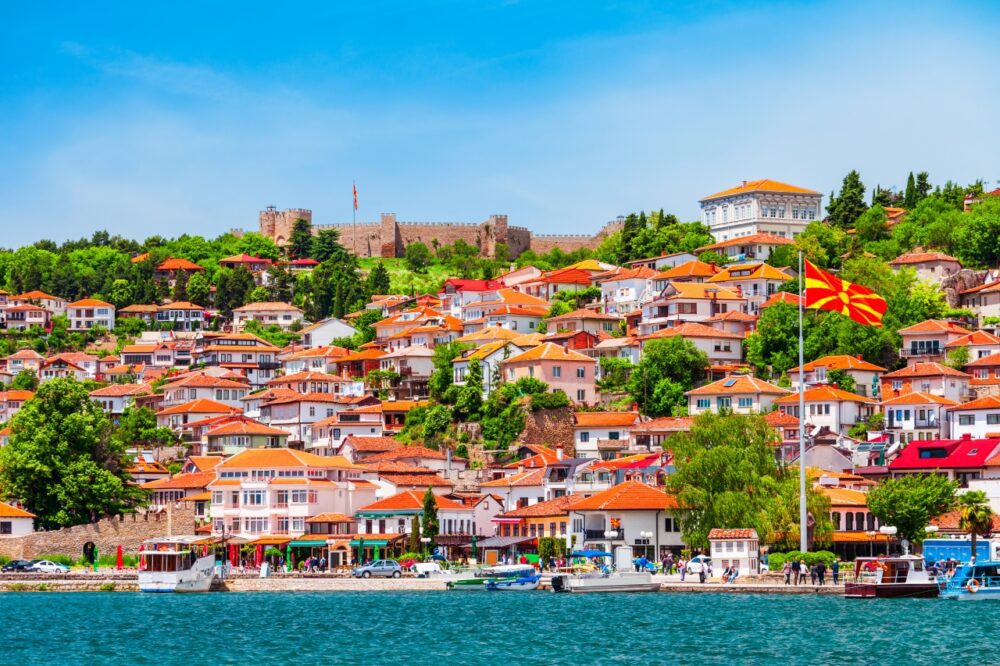
Introduction
Nestled in the heart of the Balkans, North Macedonia is a hidden gem that often flies under the radar. But trust me—this small, landlocked country packs a punch. From its rich history and vibrant cities to stunning landscapes and warm, welcoming people, North Macedonia offers a mix of culture, adventure, and relaxation that’s hard to beat. Whether you’re wandering through the buzzing streets of Skopje, hiking in remote national parks, or taking a dip in the crystal-clear waters of Lake Ohrid, this country will surprise and enchant you.
When I first visited, I was struck by how North Macedonia blends old and new in a way that feels seamless. You’ll find ancient monasteries tucked away in the mountains and sleek, modern cafes just a few steps away. It’s a country where you can immerse yourself in history one day and enjoy outdoor adventures the next, all without the crowds and high prices you’d find in more popular European destinations. Here’s why North Macedonia should be on your travel radar.
Table of Contents
Reasons You Should Visit North Macedonia
1. A Rich Tapestry of History
North Macedonia is a dream for history buffs. This small country has been at the crossroads of empires for millennia, and its historical layers are visible in every corner. From ancient Roman ruins to Ottoman architecture, you’ll be stepping back in time as you explore. Skopje, the capital, is a fascinating mix of old and new, with grand statues and monuments lining its streets.
I was particularly drawn to Stobi, one of the most significant archaeological sites in the Balkans. Wandering through its ancient amphitheatre and mosaics, I could almost feel the ghosts of the Roman Empire. Then there’s Kokino, a Bronze Age observatory that’s been called “Macedonia’s Stonehenge.” It’s a bit off the beaten path, but that’s part of the adventure. Standing atop the rocks, with the wind whipping around me and views stretching for miles, I couldn’t help but feel a deep connection to the ancient people who once used the site.
2. Stunning Natural Landscapes
One of the biggest surprises for me in North Macedonia was the sheer variety of landscapes packed into such a small country. If you’re into hiking, kayaking, or just taking in some jaw-dropping scenery, this place is for you. Matka Canyon, just a short drive from Skopje, was one of the highlights of my trip. The steep cliffs plunging into the emerald waters of the Treska River made for some incredible kayaking. There’s also a network of caves and hiking trails if you prefer to stay on land.
For a complete change of scenery, head to Pelister National Park in the south. I spent a few days trekking through the park’s rugged terrain, passing glacial lakes and dense pine forests. The air was so fresh, and the only sounds were birds and the occasional rustle of wind through the trees. It’s also home to the rare Macedonian pine, a species found only in this part of the world.
3. Ohrid – The Gem of the Balkans
Lake Ohrid and its namesake town are the crown jewels of North Macedonia. This UNESCO World Heritage site feels almost like a dream, with its crystal-clear waters, ancient churches, and peaceful atmosphere. I spent a few days here and could have stayed much longer. The lake itself is perfect for swimming, boating, or just relaxing by the shore, and the town of Ohrid is filled with winding cobbled streets, charming cafes, and Byzantine churches.
One of the highlights for me was visiting the Church of St. John at Kaneo, which sits perched on a cliff overlooking the lake. Watching the sunset from here, with the golden light reflecting off the water, is an experience I’ll never forget. If you have time, take a boat ride over to Struga, a quieter, more laid-back town on the other side of the lake where you can enjoy the same serene views without the crowds.
4. Delicious Food and Wine
I wasn’t expecting North Macedonia’s cuisine to be such a highlight, but the food here is simply fantastic. It’s a blend of Mediterranean, Turkish, and Balkan influences, which means you’re in for a treat. One dish you have to try is tavče gravče, a traditional bean stew that’s hearty and delicious. Pair it with some ajvar, a roasted red pepper spread, and a basket of fresh bread, and you’ve got a meal fit for a king.
And let’s not forget the wine. North Macedonia has been producing wine for thousands of years, and it’s seriously underrated. The country’s most famous grape is Vranec, a rich, full-bodied red that goes perfectly with grilled meats. I recommend heading to the Tikveš wine region for a tasting tour. The vineyards are beautiful, and the locals are more than happy to share their knowledge and passion for wine with you.
5. Affordable and Uncrowded
One of the biggest draws of North Macedonia is how affordable it is. Whether you’re looking for a cosy guesthouse or a more luxurious hotel, you won’t have to break the bank. I stayed in a charming guesthouse near Lake Ohrid for less than €30 a night, and meals at local restaurants are shockingly cheap—think €5 for a hearty dinner.
Another bonus is that, unlike many other European destinations, North Macedonia hasn’t been overrun by tourists. Even in popular spots like Ohrid and Skopje, I never felt overwhelmed by crowds. It’s the kind of place where you can take your time, explore at your own pace, and really connect with the culture and the people.
Best Places to Visit in North Macedonia
1. Skopje

Skopje is a city of contrasts, where ancient history meets bold, modern architecture. The first thing that struck me when I arrived was the sheer number of statues. Everywhere you look, there’s a monument, a fountain, or a grand building. The Stone Bridge, which connects the old and new parts of the city, is a great place to start your exploration. On one side, you have the Old Bazaar, a maze of narrow streets and Ottoman-era buildings, and on the other, the modern and somewhat controversial Skopje 2014 project, which has transformed the city’s skyline with neoclassical facades and giant statues.
One of my favourite experiences was visiting the Memorial House of Mother Teresa, who was born in Skopje. It’s a small but moving tribute to one of the world’s most famous humanitarians. And if you want some fresh air, take the cable car up Mount Vodno to see the massive Millennium Cross and enjoy panoramic views of the city.
2. Matka Canyon
Just a half-hour drive from Skopje, Matka Canyon is a nature lover’s paradise. The canyon is a dramatic mix of towering cliffs and calm waters, perfect for a day of kayaking or boating. I rented a kayak and paddled along the Treska River, stopping to explore some of the hidden caves along the way. There’s also the Vrelo Cave, one of the deepest underwater caves in Europe, which you can visit by boat.
If you prefer hiking, there are several trails that wind through the canyon, offering spectacular views of the river below. After a day of adventure, I stopped for lunch at a riverside café where I enjoyed fresh fish and a cold beer while soaking in the peaceful surroundings. Matka is the perfect escape from the city and a great way to experience North Macedonia’s natural beauty.
3. Bitola
Bitola is one of the country’s most charming and historic cities, yet it often gets overlooked by travellers. Located in the southern part of North Macedonia, near the Greek border, Bitola is known for its elegant architecture, vibrant café culture, and fascinating history. I loved strolling down Shirok Sokak, the city’s main pedestrian street, lined with colourful neoclassical buildings and bustling with life.
One of Bitola’s highlights is the ancient site of Heraclea Lyncestis, founded by Philip II of Macedon (the father of Alexander the Great). The site is famous for its stunning Roman mosaics, which are some of the best-preserved in the Balkans. I also visited the Bitola Clock Tower, one of the city’s most iconic landmarks, and the nearby Pelister National Park, where you can hike through beautiful landscapes and spot rare wildlife like the Balkan lynx.
4. Ohrid

Ohrid is undoubtedly the star of North Macedonia, and for good reason. This lakeside town has a charm that’s hard to resist. Whether you’re exploring its ancient churches, taking a boat trip on the lake, or simply relaxing on the beach, Ohrid feels like a step back in time. The lake itself is one of the oldest and deepest in Europe, and its waters are so clear that you can see straight to the bottom in some places.
One of my favourite spots was the Church of St. Sofia, with its beautiful frescoes and peaceful courtyard. Another must-see is the Ancient Theatre of Ohrid, which dates back to Hellenistic times and is still used for performances today. And of course, no visit to Ohrid is complete without a stop at Samuel’s Fortress, where you can walk along the ancient walls and take in stunning views of the town and lake.
5. Mavrovo National Park
If you’re a fan of the great outdoors, Mavrovo National Park is the place to be. Located in the western part of North Macedonia, this park is home to the country’s highest peak, Mount Korab, and some of its most stunning scenery. I spent a few days hiking through the park, taking in views of deep forests, alpine meadows, and crystal-clear rivers. The park is also a great spot for skiing in the winter months, with Zare Lazarevski Ski Resort offering some of the best slopes in the country.
One of the most unique sights in Mavrovo is the Sunken Church of St. Nicholas, which emerges from the waters of Mavrovo Lake depending on the water levels. It’s a hauntingly beautiful sight and one of the most photographed spots in the park. Whether you’re here for hiking, skiing, or simply enjoying the fresh mountain air, Mavrovo is a nature lover’s paradise.
6. Struga
While Ohrid tends to steal the spotlight, Struga, on the other side of Lake Ohrid, offers a quieter, more relaxed atmosphere. It’s the kind of place where you can kick back, grab a coffee by the river, and watch the world go by. The Black Drin River flows right through the town, making it a scenic spot for an afternoon stroll. I loved walking along the riverbank and watching the locals fish or paddle in small boats.
Struga is also known for its poetry festival, the Struga Poetry Evenings, which draws poets from around the world. If you’re here in late August, it’s worth checking out for a taste of the town’s cultural side. And of course, like Ohrid, Struga has some great lakeside beaches where you can swim, sunbathe, or rent a kayak.
7. Stobi
For anyone interested in ancient history, Stobi is a must-visit. Located about an hour’s drive from Skopje, this archaeological site was once a thriving Roman city. Today, you can wander through its well-preserved ruins, including a theatre, basilicas, and even the remains of a Roman palace. The mosaics here are particularly impressive—intricate designs that have survived centuries of wear.
I found Stobi to be a fascinating glimpse into the past. Unlike more famous Roman sites in Europe, Stobi is relatively quiet, so you can explore at your own pace without being jostled by crowds. There’s a small museum on-site with some interesting artefacts, but the real joy is just wandering through the ruins and imagining what life was like here thousands of years ago.
8. Kratovo
Tucked away in the mountains of eastern North Macedonia, Kratovo is a small town with a lot of character. Known for its stone bridges and medieval towers, Kratovo has a unique charm that’s hard to find elsewhere. I loved wandering through its narrow streets, crossing the ancient bridges that span the town’s deep ravine. The town has a rich history as a mining centre, and you can still see traces of its past in the old houses and towers.
Kratovo is also a great place to experience authentic Macedonian hospitality. I stayed with a local family in a guesthouse, and they treated me like one of their own, serving up home-cooked meals and sharing stories about the town’s history. If you’re looking for a taste of traditional Macedonia, Kratovo is the perfect place to slow down and enjoy the simple pleasures of life.
9. Kokino
Kokino is one of North Macedonia’s most unique and fascinating sites. This Bronze Age observatory, located in the mountains near the town of Kumanovo, is thought to be one of the oldest in the world, dating back more than 3,800 years. It was used to track the movement of the sun and moon, and standing on the ancient rocks, you can’t help but feel a connection to the people who lived here thousands of years ago.
Getting to Kokino is an adventure in itself—the road winds through the mountains, offering stunning views along the way. I arrived just before sunset, and the sight of the sun dipping below the horizon from this ancient site was magical. If you’re a history buff or just love a good sunset, Kokino is well worth the trip.
Travel Tips for North Macedonia
Getting Around North Macedonia
Public transport in North Macedonia is affordable and reliable, with buses being the main way to get around. There are frequent services between cities like Skopje, Ohrid, and Bitola, though schedules can be flexible. Taxis are inexpensive, especially in cities, but always agree on a price or ensure the driver uses a meter. Renting a car is the best option for exploring the more remote parts of the country, especially if you want to visit national parks like Mavrovo or small towns.
Best Time to Visit North Macedonia
The best time to visit North Macedonia is in spring (April to June) and autumn (September to October), when the weather is pleasant, and the landscapes are lush. These seasons are ideal for hiking in the mountains or exploring Lake Ohrid without the summer crowds. Summer (July to August) is warmer and great for enjoying the lakes, but it can get quite hot in the cities. Winter is cold, with snow in the mountains, perfect for skiing in places like Mavrovo, but city attractions may be quieter.
Passport and Visa Requirements for North Macedonia
Citizens of the EU, UK, US, Canada, and Australia can enter North Macedonia visa-free for up to 90 days. Your passport should be valid for at least six months beyond your intended stay. If you plan to visit neighbouring countries like Albania or Greece, make sure to check their visa requirements as well. Keep in mind that North Macedonia is not part of the Schengen Zone, so you’ll need to go through border controls when entering or leaving.
Currency and Banks in North Macedonia
North Macedonia uses the Macedonian Denar (MKD), and while credit cards are accepted in larger cities and tourist areas, many small shops and rural areas are cash-only. ATMs are easy to find in cities like Skopje and Ohrid, but it’s wise to carry cash, especially when travelling outside urban centres. Currency exchange offices are common, and most offer reasonable rates. Tipping is appreciated, usually 5-10% in restaurants, but it’s not compulsory.
Language and Useful Phrases to Know
The official language is Macedonian, but in tourist areas, especially in Skopje and Ohrid, many people speak English. However, learning a few Macedonian phrases can enhance your experience. Try “Zdravo” (hello), “Blagodaram” (thank you), and “Ve molam” (please). In the western regions of the country, Albanian is widely spoken, and knowing basic greetings in either language will be appreciated.
Budgeting and Costs for North Macedonia
North Macedonia is one of the most budget-friendly destinations in Europe. You’ll find affordable accommodation, dining, and transport throughout the country. A meal at a local kafana (traditional tavern) costs very little, and public buses are inexpensive. To save on accommodation, stay in guesthouses or hostels, especially in tourist areas like Lake Ohrid. Many of the country’s main attractions, such as hiking in national parks or visiting monasteries, are either free or come with minimal entrance fees.
Conclusion
North Macedonia is a country that offers a little bit of everything, from ancient history and stunning landscapes to vibrant cities and warm hospitality. Whether you’re exploring the lively streets of Skopje, hiking in Mavrovo National Park, or relaxing by the shores of Lake Ohrid, you’ll find that North Macedonia has a unique charm that’s hard to resist. And best of all, it’s still largely undiscovered, meaning you can experience all this without the crowds.
So, if you’re looking for a destination that combines adventure, culture, and relaxation—without breaking the bank—North Macedonia should be at the top of your list. It’s a place that will surprise and delight you at every turn, and I guarantee you’ll leave with a deep appreciation for this hidden gem of the Balkans.
